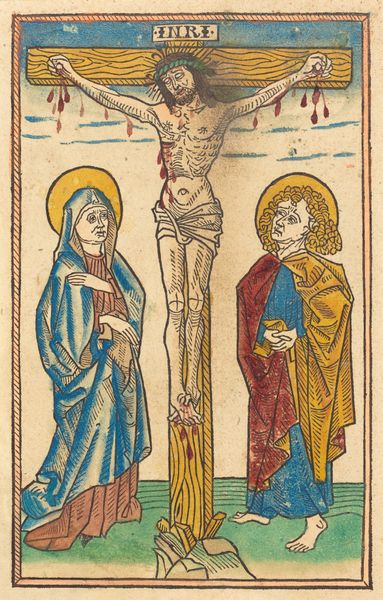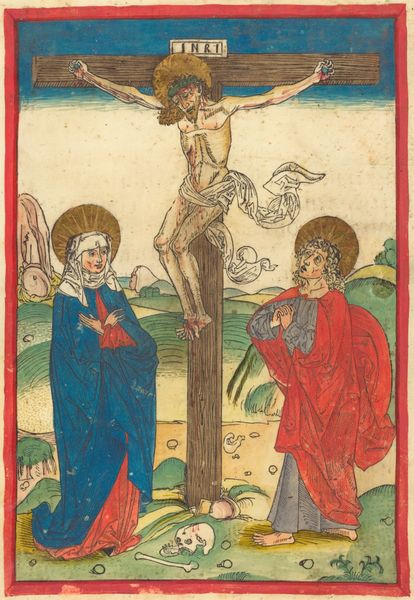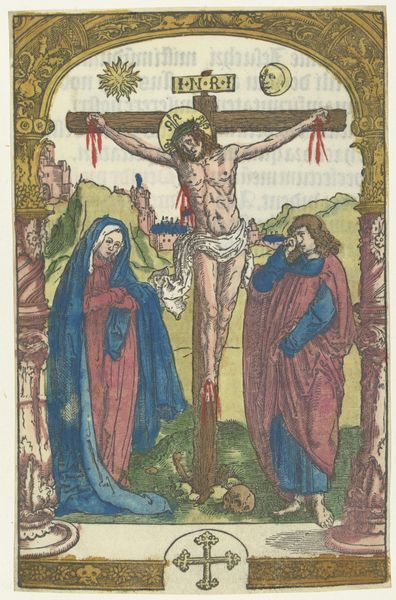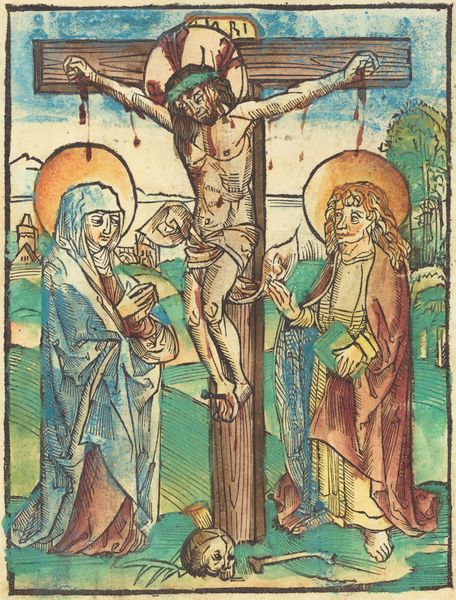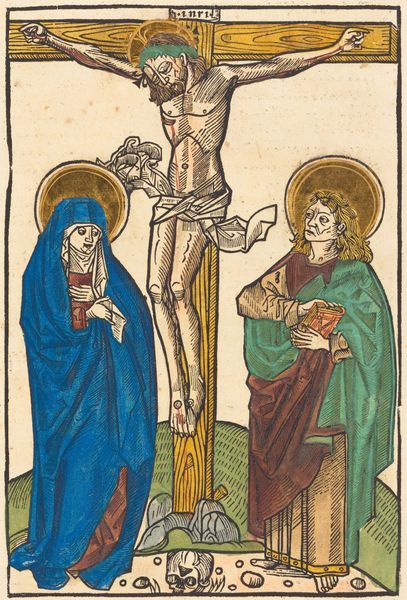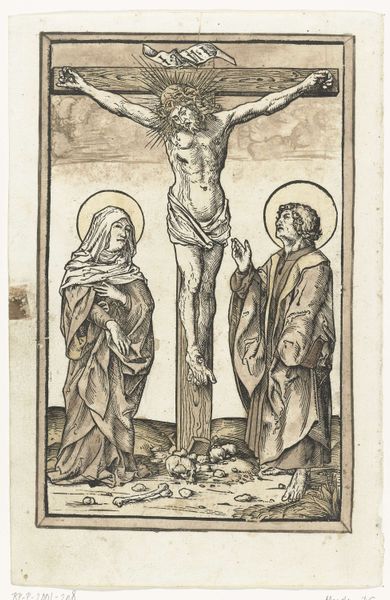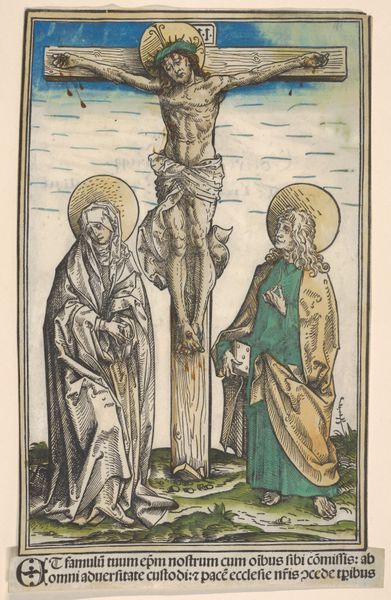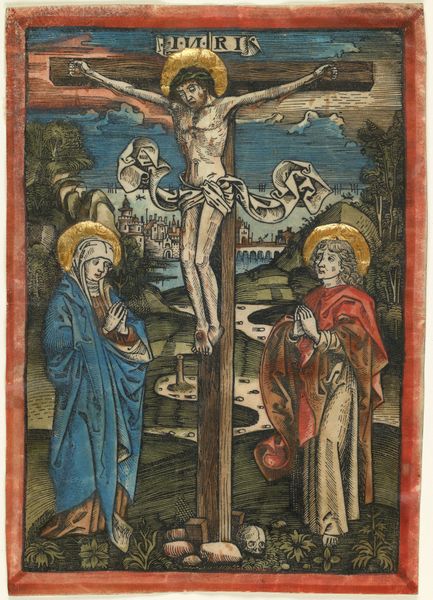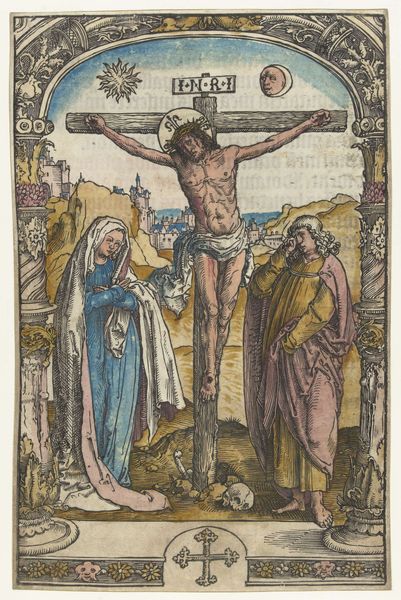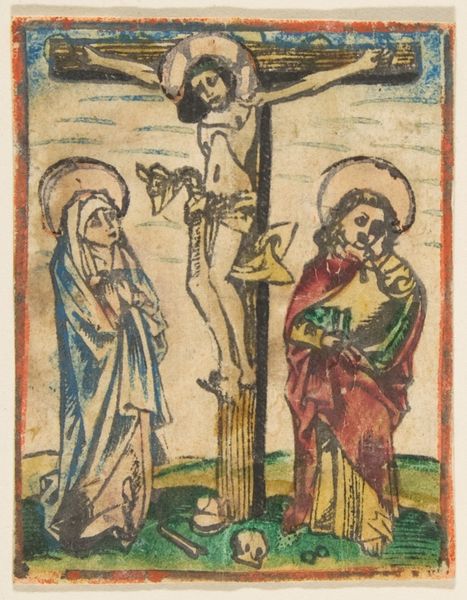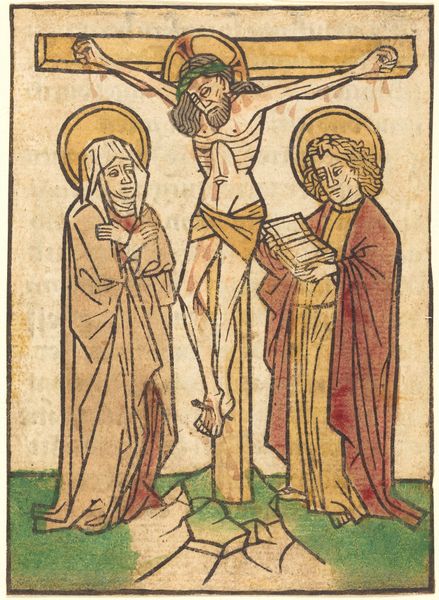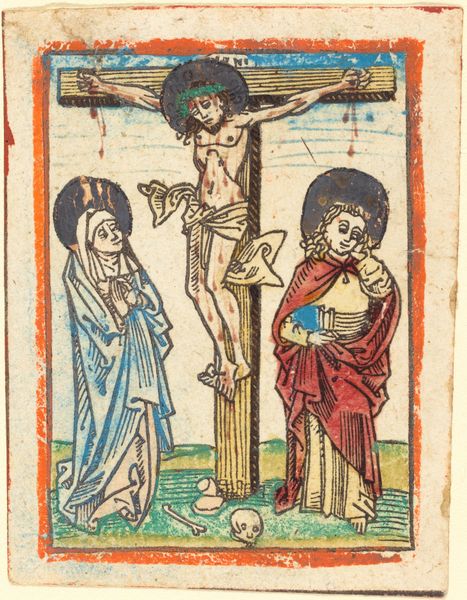
print, woodcut
#
portrait
# print
#
landscape
#
figuration
#
woodcut
#
history-painting
#
italian-renaissance
Dimensions: image: 23.5 x 16.8 cm (9 1/4 x 6 5/8 in.) sheet: 32 x 22.3 cm (12 5/8 x 8 3/4 in.)
Copyright: National Gallery of Art: CC0 1.0
Editor: Here we have an early sixteenth-century woodcut, "Christ on the Cross," made by an anonymous artist. I find the raw, graphic quality quite striking. What can you tell me about its broader meaning? Curator: It’s impossible to separate this piece from the social and religious upheaval of the Reformation. The woodcut, as a readily reproducible medium, democratized access to religious imagery. Consider how this stark portrayal, intended for a wide audience, might have served as a potent form of visual theology and perhaps even of social critique at a time of immense societal tension. Does the apparent naivete hide something deeper, a more subversive undercurrent perhaps? Editor: I hadn't thought about it in that way, more that woodcuts were cheaper, lower status artworks. Curator: Precisely. But consider its context. This was a time when religious authority was being questioned, and art was actively used as a form of propaganda on all sides. How might this image challenge or reinforce prevailing power structures, particularly in its depiction of suffering and redemption? Editor: It’s interesting to consider that this depiction of Christ on the cross could be trying to make a political point during the Reformation period. It makes me look at it in a new way. Curator: Exactly. And who is missing? What is suggested in their absence? How might that absence contribute to the power dynamics at play here? By exploring these layers, we begin to unpack the complex dialogue between art, faith, and the social forces that shaped its creation and reception. Editor: Thanks! It seems I have a lot to learn and think about.
Comments
No comments
Be the first to comment and join the conversation on the ultimate creative platform.
